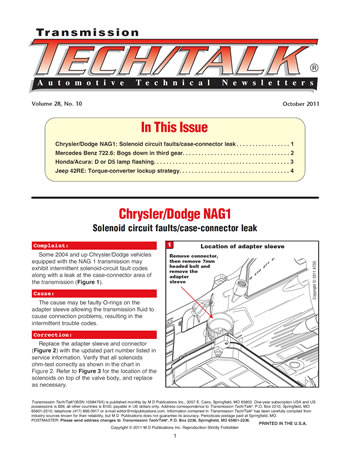Connected or Disconnected
The motor vehicle is a combination of many separate components and operating systems that are mechanical, hydraulic, electronic, and air or vacuum operated. Successful diagnosis and repair can be accomplished only by viewing the problem with a systemic approach and careful consideration of the entire group of components that can influence or be the cause of the complaint.
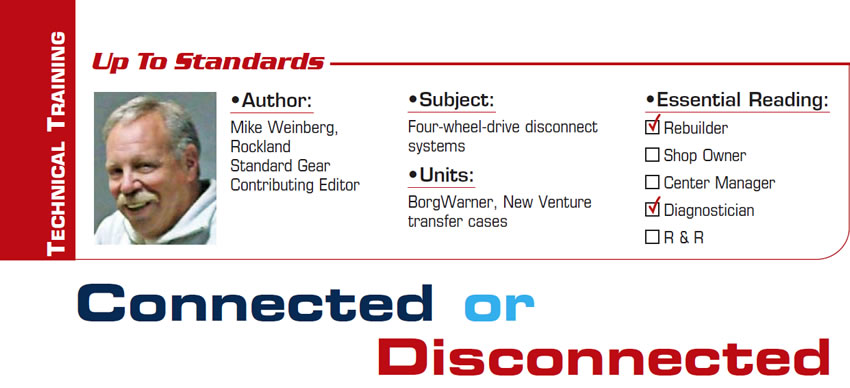
Let’s Talk about Adaptive Shift Strategy
The 604 was the first American computer-controlled transmission with adaptive shift strategy. The relearn process was not much different from what it is for today’s transmissions. For those of you who were not in the transmission industry back then, there was no quick-learn procedure for the 604. The quick-learn feature was not available until the mid-’90s. You actually had to drive the car at different throttle openings to relearn the shift adapts, and it could take 30 minutes or more of driving time to get it right.
November 2011 Issue
In This Issue
2004 & later GM ‘T’ truck: 4L60-E TPD-model changes
4L65-E M33 partial-hybrid transmission: Auxiliary-pump filter
Allison 1000/2000 series: No forward movement
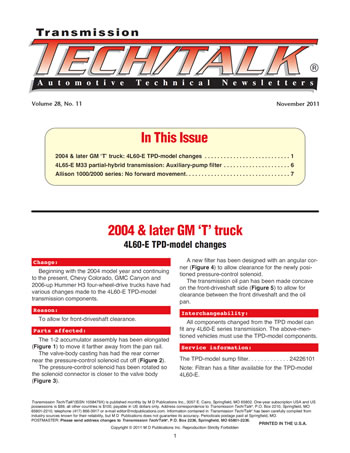
Self-Aligning Release Bearings
Many of today’s release bearings may not look like the original bearing that was in the vehicle. A large number of release bearings are now of the “self-centering” type.
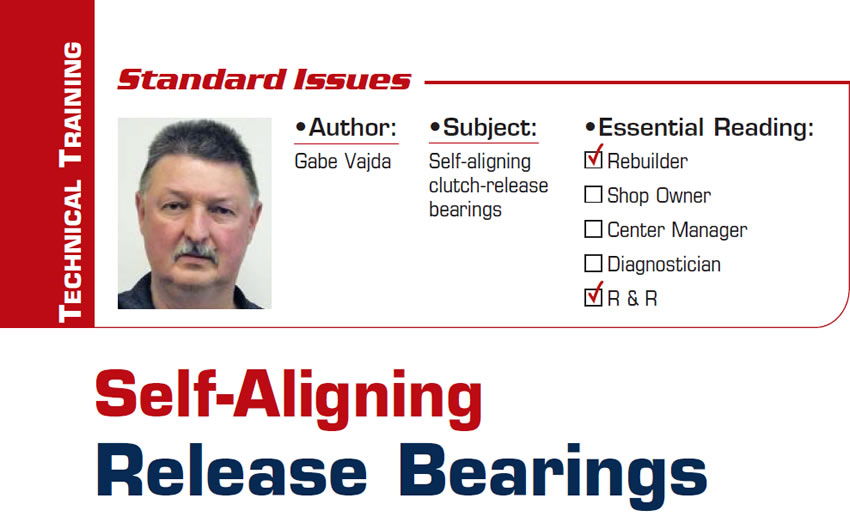
An Interesting ‘Spin-off’ of a Hall-Effect Speed Sensor
Since the time of writing that article, it seems the Hall-effect style of sensor is favored among the manufacturers, most likely because of its reliability and the cost effectiveness of producing it. This sensor can be either a two- or three-wire design, with the frequency signal being generated by a magnetic wheel (ring) or by the teeth of a gear. The three-wire design consists of a voltage-supply wire, a ground and a signal wire. The two-wire design has a voltage-supply wire and a signal wire. For this two-wire sensor to work a resistor inside the TCM/PCM is wired to ground, allowing the voltage on the signal wire to drop when the rotating magnet is used to “chop” the sensor circuit and producing the signal pulse.
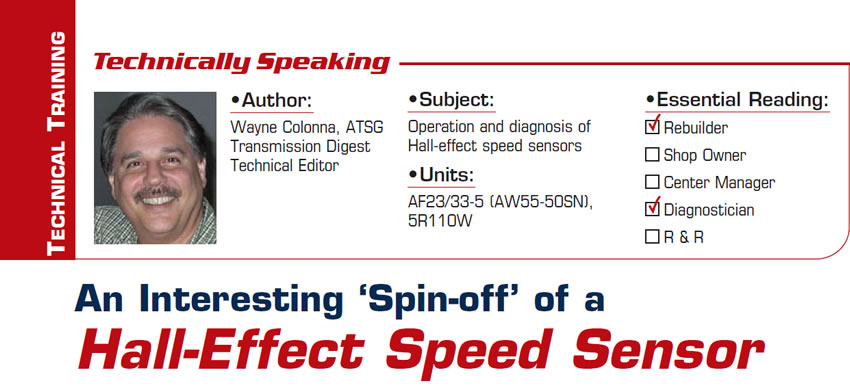
What’s Causing Third-Clutch Failures in Honda Five-Speeds?
For a while now I have been interested in finding out what is causing third-clutch failures in Honda five-speed transmissions. An opportunity finally presented itself when a customer brought in his 2003 Honda LX with a 3.0L engine and a BAYA five-speed automatic transmission. We had overhauled this transmission three years ago when the vehicle had 60,000 miles. Now with 134,000 miles the vehicle had an erratic 2-3 shift and code P0780 “Problem in Shift Control System.” When we disassembled the unit the only problems we found were burnt third clutches (Figure 1) and badly burnt fluid.
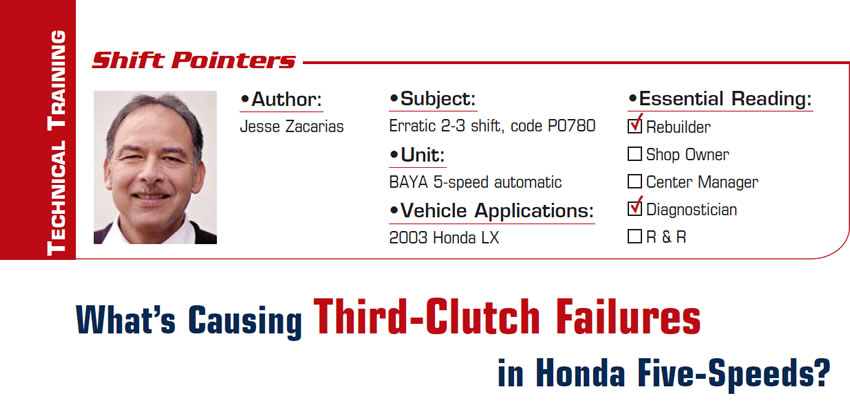
The Customer Will Believe It Only If You Do
A half-hearted attempt to make a sale leads to disbelief on the part of the customer: “Well, your brakes are pretty worn out. You may want to think about replacing them.” Does the customer need the brake job or not? If he does, tell him so. If not, tell him when he will. Being wishy-washy about it doesn’t do either side any good. The customer loses confidence and you don’t make sales.
New-Style BMW Release Bearing
New BMW applications with manual transmissions will use a newstyle release bearing. This new release bearing will incorporate two different mounting positions. The different positions will change what is known as the fork-to-face dimension.
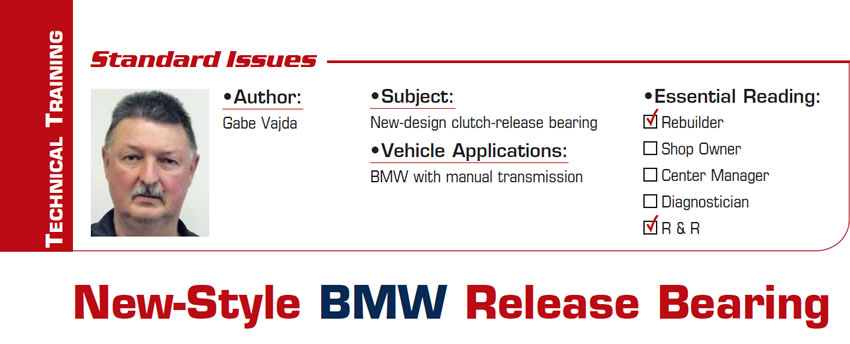
Everything but the Sink Fails to Fix ’98 Seville
When times get hard, people tend to do things themselves as much as possible before spending money to pay a professional. That’s completely understandable. It’s when they reach the point that it’s costing them more to do it themselves and yet they keep throwing money at the problem that I can’t understand. That’s the point where ego overrides logic. I guess once you get in so deep, it’s hard to cut your losses. It seems to me that it’s about the “twice-what-it-should-have-cost” point that I’ll get that phone call.
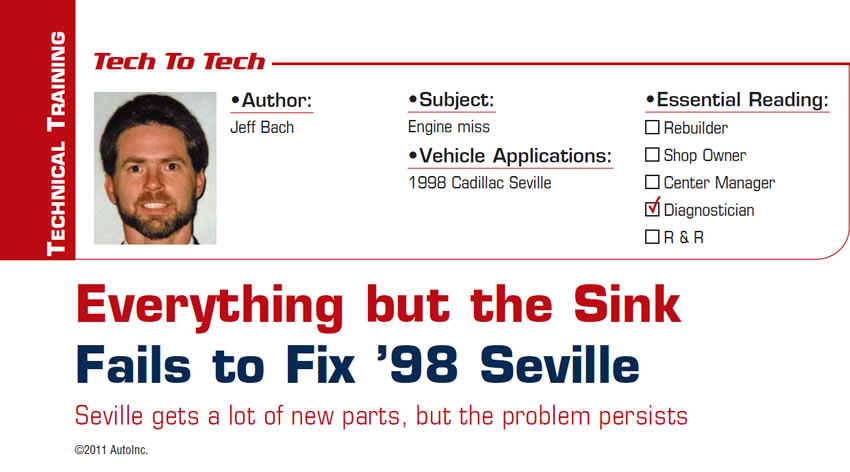
Understanding the Myths and Mysteries of Differential Repair
One of the simplest and most-profitable repairs a shop can perform is to the differential or third member. Yet many shops do not understand the fine points of this work and turn it away.
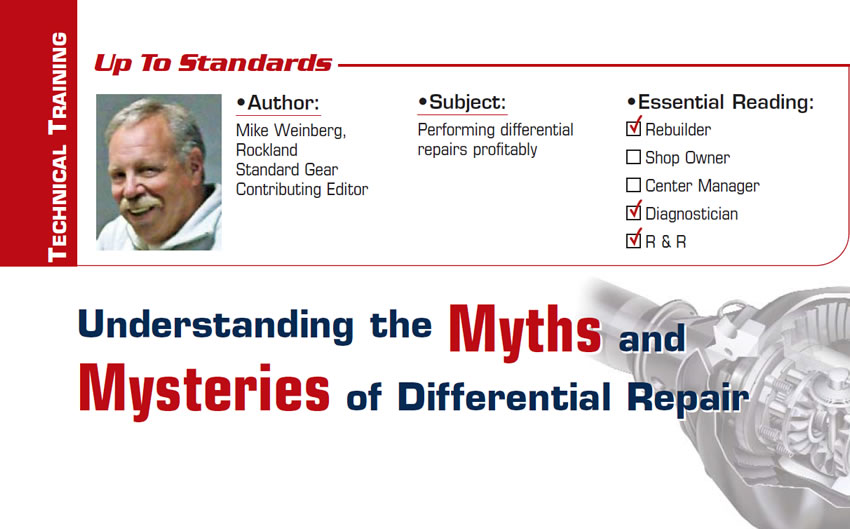
It Is Never Wrong to Do Right
The vehicle was a 2006 Pontiac G6 with a 2.4-liter engine and a 4T40-E transaxle. The customer complained that it was shifting hard all the time. OK, let’s take a survey: How many of you have your hand up saying, “I want that job; bring it on?” My thoughts when I saw the repair order with that complaint were that it should be a fast fix and easy to troubleshoot. Oh, boy, was I wrong.
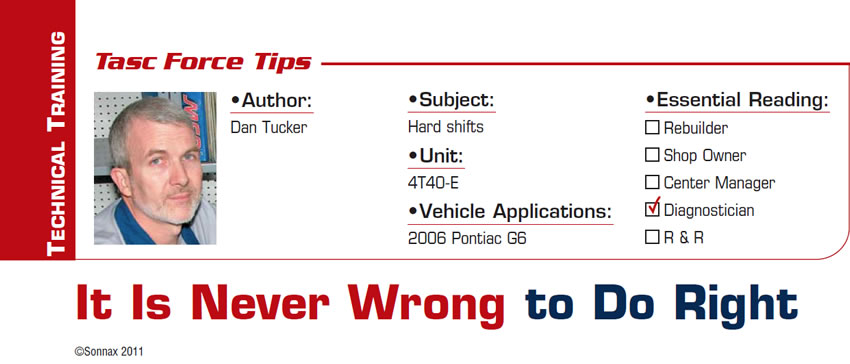
October 2011 Issue
In This Issue
Chrysler/Dodge NAG1: Solenoid circuit faults/case-connector leak
Mercedes Benz 722.6: Bogs down in third gear
Honda/Acura: D or D5 lamp flashing
Jeep 42RE: Torque-converter lockup strategy
